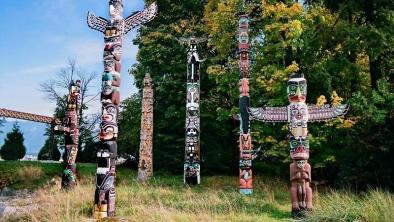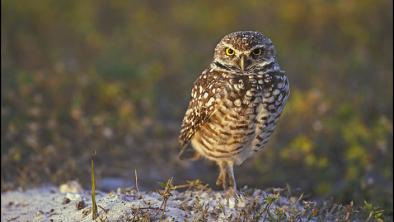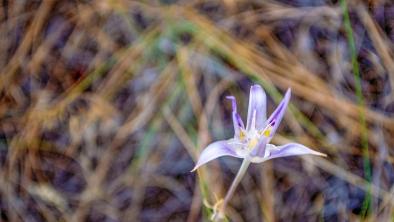Province plays down national park support, files obtained through Freedom of Information suggest
Osoyoos Times

The provincial government is “downplaying overwhelming public support” for a national park in the South Okanagan, says the Wilderness Committee, which released about 5,000 pages of government documents last week.
The Vancouver-based conservation and environmental group obtained the documents through Freedom of Information.
Most of the documents are public responses to the provincial government’s “Intentions Paper” released in August 2015, which presents scenarios for protecting wilderness areas of the South Okanagan.
The Intentions Paper proposed two small areas of national park reserve separated from each other – one south of Highway 3 and the other north of Oliver.
The largest area in between, Area 2, which includes Mount Kobau, would remain under provincial control as a “conservancy,” which park supporters say offers minimal protections.
The committee says the government received 3,653 submissions with 3,276 indicating support for a national park reserve and 282 opposed. Another 95 either didn’t give a clear yes-no answer or were duplicates.
Many submissions did not clearly identify where they came from, so the committee classed these as non-local, even though they may have been from the South Okanagan.
In total, of submissions supporting a park reserve, 3,132 were classed as non-local and 144 as local.
Of those opposed to a park reserve, 220 were classed as non-local and 62 were classed as local.
Although the numbers cannot be considered as a scientifically accurate poll because they are not a random sample, the local submissions are roughly consistent with a poll by McAllister Opinion Research released in April 2015.
That poll found local support ranging between three-to-one and two-to-one depending on the area surveyed.
The documents “directly contradict” the government’s Consultation Summary Report released in May that “minimized both the level of support and interest in having all of the proposed protected area within the national park reserve,” the Wilderness Committee says in a news release.
The committee also says a majority of submissions recommend that Area 2 should be included in the park reserve.
“Why the B.C. government has chosen to suppress information that shows the public overwhelmingly supports all areas, including Area 2 to be in the national park reserve, is a mystery to us,” said Joe Foy, national campaign director with the Wilderness Committee.
“In our opinion, Victoria and local MLA Linda Larson need to pay more attention to feedback that came right from their own public consultation process,” said Foy.
The provincial government’s May report says 3,460 responses related to the Intentions Paper were received, but it doesn’t give any breakdown of numbers supporting or opposing a national park reserve.
Larson, who has opposed a national park, took issue with the Wilderness Committee’s statements.
“I don’t think the government tried to hide anything,” she said. “I don’t know why (the Wilderness Committee) are making statements now regarding that. Read the report.”
Larson said the report acknowledges that many people want the whole area to be a national park and that a huge number of cards and letters were received in support of a park.
“The report clearly states there was huge support for a national park and the minister clearly states in the report that these are the steps we go through before we move ahead,” said Larson.
The steps, she said, involve consultations with First Nations.
The MLA says she stepped away from the consultation process in December “when I was accused of having a bias, so I don’t get involved in it at all anymore and the (Environment) Minister (Mary Polak) is dealing with this.”
Asked for clarification of her statement that she has stepped away from the consultation process, Larson insisted that she told the media of this back in December.
Her Dec. 9 statement, however, only mentions the disbanding of a focus group to review submissions and didn’t say Larson was stepping away from the process.
The Ministry of Environment did not respond specifically to a request for comment on the Wilderness Committee’s statements, but it did send talking points similar to those issued after the May report.
“It is clear that there are very strong opinions on both sides of this issue,” said the talking points. “Therefore, the province is looking for a solution that respects the diversity of opinion, but ultimately achieves the desired goal of effectively protecting important environmental and cultural values of the region.”
The 2010 Parks Canada proposal for a single national park is not up for reconsideration, the talking points continue.
The ministry reiterated that it will develop final recommendations “to be released later this year,” and said it is continuing to engage with First Nations to better understand their interests and ensure they are reflected in a final proposal.
A ministry spokesperson could not confirm reports that Polak will be meeting Sept. 19 with chiefs from the Osoyoos Indian Band, Lower Similkameen Indian Band and Penticton Indian Band.
A quote from Osoyoos Mayor Sue McKortoff was included with the news release pointing to the value of a national park reserve for drawing tourists and protecting “rare and unique species and habitat that are part of what we, as a community, identify with.”
McKortoff said the quote was prepared for her, but she signed off on it because it reflected the position previously taken by Osoyoos town council.
McKortoff said when council last year met with Premier Christy Clark at the Union of B.C. Municipalities (UBCM) convention, it urged her to move forward with a national park reserve.
“We’ve already been very vocal about it,” she said.
McKortoff said there’s a perception that people in Oliver oppose a national park, but she’s met a number of people from Oliver who make a point of telling her that not everybody in Oliver thinks that way and many support a national park.
She supports inclusion of Mount Kobau in a national park.
“You’d hate to lose that,” she said. “It’s just a real jewel up there.”
But McKortoff also recognizes the need for compromise to accommodate all the various groups.
“We’re quite keen on having this move forward,” she said.
Asked if she’s discussed the issue recently with Larson, McKortoff said she has not.
“I think she represents a lot of people from her area that probably talk to her and express their views about why they don’t like it,” said McKortoff. “She knows how I stand and I know how she stands. It’s not something that has been high on our list to talk about. We’ve had several other issues in the last six months that we’ve had to deal with.”
In addition to public feedback, the documents also record internal discussions at the B.C. Ministry of Environment on how to respond to media inquiries, in particular from the Osoyoos Times.
Read the original article with map and supporting documents here.


